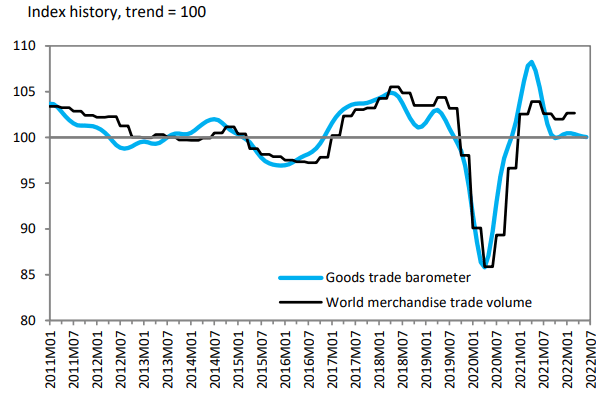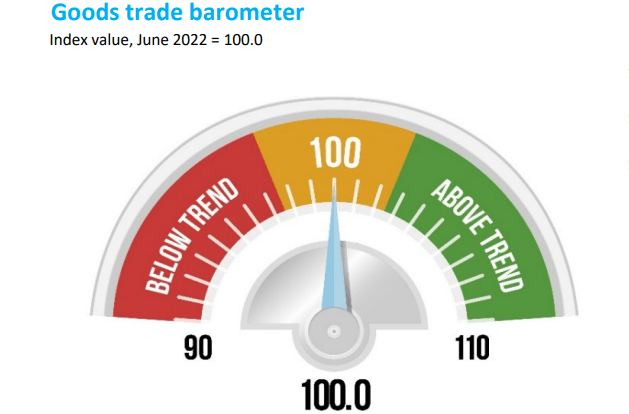The Goods Trade Barometer (WTO), a composite indicator of world trade, stood at 100 points in June 2022.
In general, this indicator provides real-time information on the trajectory of merchandise trade relative to recent trends.
The reading coincides exactly with the reference value of the index, indicating an expansion within the trend.

So the barometer index is below the merchandise trade volume index, suggesting that year-on-year trade growth may slow further in the second quarter, although it remains positive as the drag from the Russia–Ukraine conflict is offset by the relaxation of pandemic controls in China.
Trade Barometer
Global merchandise trade volume showed no growth, with year-on-year trade increasing by only 3.2% in the first quarter. This was a drop from 5.7% recorded in the fourth quarter of the previous year.
This slowdown reflects several factors. The conflict in Ukraine, which began in late February, played a role. Additionally, Covid-19 lockdowns in China further impacted trade during the first quarter.
Despite these challenges, the trade growth aligns with the WTO’s April forecast. The WTO projected a 3.0% increase in global merchandise trade volume for 2022.
However, uncertainty about the forecast has increased due to the ongoing conflict in Ukraine, rising inflationary pressures and expected policy tightening in advanced economies.
The indices that make up the barometer are mixed, with most showing on-trend or below-trend growth.
The export orders index (100.1) is on trend, but down.
On the other hand, the automotive products index (99.0) is slightly below trend, but has lost its upward momentum.
The air transportation (96.9) and electronic components (95.6) indexes are below trend and pointing downward, while the raw materials index (101.0) has recently risen slightly above trend.
Finally, the main exception is the container shipping index (103.2), which has risen firmly above trend as shipments through Chinese ports have increased due to the relaxation of Covid-19 restrictions.

